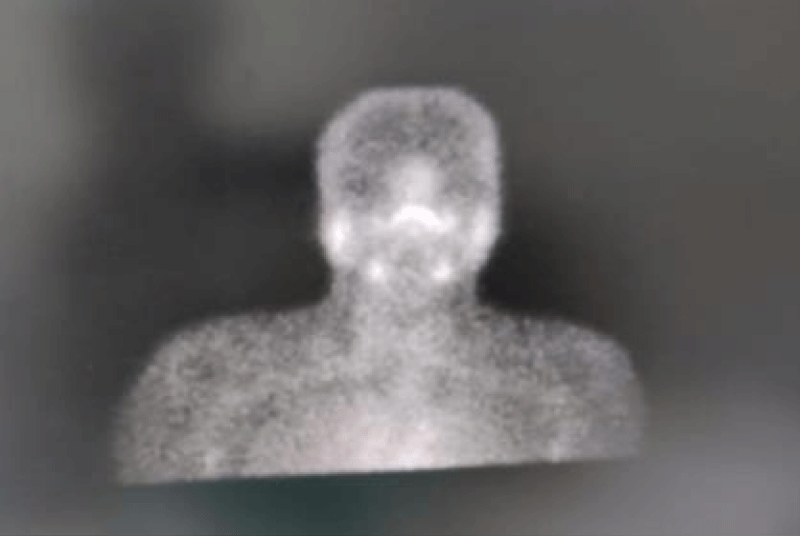Global Journal of Infectious Diseases and Clinical Research
Subacute thyroiditis-an unusual endocrine cause of pyrexia of unknown origin: Case report with review of literature
Ananta Mishra1*, Vinay Pandit2, Jhasketan3 and Abhishek4
2HOD, Department of Medicine, AIIMS Raipur, Chhattisgarh, India
3Assistant Professor, Department of Medicine, AIIMS Raipur, Chhattisgarh, India
4JR, Department of Medicine, AIIMS Raipur, Chhattisgarh, India
Cite this as
Mishra A, Pandit V, Jhasketan, Abhishek (2023) Subacute thyroiditis-an unusual endocrine cause of pyrexia of unknown origin: Case report with review of literature. Glob J Infect Dis Clin Res 9(1): 009-011. DOI: 10.17352/2455-5363.000055Copyright
© 2023 Mishra A, et al. This is an open-access article distributed under the terms of the Creative Commons Attribution License, which permits unrestricted use, distribution, and reproduction in any medium, provided the original author and source are credited.We report a case of a 58-year-old male who presented with high grade fever of 45 days duration. He had presented with a dry cough and right ear pain. His initial clinical evaluation and diagnostic tests were unremarkable. During the hospital stay, he developed palpitation for which tests for thyroid functions were done which revealed subacute thyroiditis. He recovered fully with the treatment. Subacute thyroiditis is one of the rarely mentioned causes of Pyrexia of Unknown origin. A high index of suspicion and appropriate imaging is required for early diagnosis and management.
Introduction
Infection-related causes of Pyrexia of Unknown origin are approximately 16%, whereas non-infectious inflammatory conditions contribute up to 22% of cases [1]. Endocrine causes of fever of unknown origin include subacute thyroiditis, thyrotoxicosis, adrenal insufficiency, and pheochromocytoma. Subacute thyroiditis is a clinical condition presumed to be caused by a viral infection or a post-viral inflammatory process. It is a well-known cause of pyrexia of unknown origin but it manifests with classical signs and symptoms [2]. It is usually characterized by neck pain or discomfort and a tender diffuse goiter. Fever and constitutional symptoms are common associations with this disease but persistent fever without neck pain or thyroid tenderness is uncommon. The course that it follows is hyperthyroidism initially followed by euthyroidism, hypothyroidism and later the normal thyroid function may or may not be restored. It is one of those endocrine disorders that must be considered in the workup for pyrexia of unknown origin.
Case report
A 58-year-old male, with no known comorbidities, presented to our center with complaints of high-grade intermittent fever for 45 days, initially associated with dry cough and later on right earache.
On examination, he was febrile and had tachycardia. Other vitals were stable. Eye examination and thyroid examination were normal. There was no peripheral lymphadenopathy. Other general and systemic examination was unremarkable. ENT opinion was taken which revealed nothing significant.
Routine investigations were done to evaluate the cause of pyrexia of unknown origin.
On evaluation, his laboratory investigations showed mild leukocytosis (12,630/μL), Hemoglobin11.9 gm %, and platelets 4.5 /mcL. Inflammatory markers were raised. (C reactive protein- 193 mg/L, Erythrocyte sedimentation rate– 150 mm) with normal liver and renal function tests. Serology for Malaria, Dengue, Scrub typhus, and Leptospira were negative. Procalcitonin was 0.24 ng/ml. Blood and urine cultures showed no growth. IgM for Measles and Mumps was negative. Serological tests for other viruses could not be done because of the kit’s non-availability. COVID antigen testing/Anti cyclic citrullinated peptide/Anti-Nuclear antibody was negative. Computed Tomography chest and abdomen did not reveal any abnormality. 2D Echo showed no evidence of infective endocarditis. On further evaluation, his Thyroid function tests revealed hyperthyroidism Thyroid stimulating hormone < 0.01 μIU/mL (0.3-4), fT3 – 6.4(2-7 picomoles /liter, fT4 – 3.7ng/dl (0.9-2.3).
Initially, the patient was started on empirical antibiotics (Ceftazidime and Doxycycline) along with antipyretics, non-steroidal anti-inflammatory drugs, and other supportive measures.
During admission, the patient developed episodes of palpitations and was started on beta blockers (propranolol). Based on these symptoms, further evaluation was done.
Ultrasound Neck: Bulky thyroid gland with raised internal vascularity - possible thyroiditis.
Positron Emission Tomography (Figures 1,2) showed diffuse increased uptake in both lobes of the thyroid gland.
Pertechnate thyroid scan (Figure 3) was suggestive of thyroiditis.
Based on the above findings, a diagnosis of subacute thyroiditis was made. The patient was started on tablet Prednisolone 40 mg once a day. The patient had gradual remission of symptoms and was discharged after 72 hours of defervescence. During the last follow-up in the outpatient department, the patient was asymptomatic on a tapering dose of steroids at a dose of 10 mg of prednisolone once a day.
Discussion
Pyrexia of unknown origin is a diagnostic dilemma and a detailed history taking and extensive evaluation are required often. We rarely encounter endocrine disturbances as the cause of Pyrexia of Unknown origin.
Thyroiditis may be acute, subacute, or chronic. Acute thyroiditis is secondary to bacteria-mediated suppurative infection and is characterized by painful thyromegaly and fever [3]. Chronic thyroiditis is secondary to autoimmune conditions [3]. Literature review suggests that subacute thyroiditis rarely presents as Pyrexia of Unknown origin without anterior neck pain or symptoms of thyrotoxicosis [4]. Subacute thyroiditis has an incidence of 12.1 cases per 100,000/year with a higher incidence in females than in males [5]. It is a self-limiting disease that may last 2 to 7 months [6]. Subacute thyroiditis is presumed to be caused by a viral infection or a postviral inflammatory process. Many viruses have been implicated in the causation such as coxsackie, mumps, measles, and influenza viruses [7]. .Some studies have shown an association with HLA B 35 [8]. Clinically it is characterized by neck pain or discomfort, a tender diffuse goiter, and a predictable course of thyroid function evolution. Solivetti, et al. have described juxta jugular and supra-isthmus lymph node enlargement as a sign of occult subacute thyroiditis [9]. Diagnosis is mostly clinical and is supported by deranged thyroid tests, a high ESR, which can be >50 mm/hour, or elevated CRP, and reduced radioiodine uptake in thyroid scan [10]. Histopathologically, the affected follicles show infiltration with mononuclear cells and disruption of epithelium [11]. NSAIDs and steroids are the mainstays of treatment. Beta-blocking agents can be administered for the relief of thyrotoxic symptoms in the initial stage. Antithyroid drugs have no role in the management of established sub-acute thyroiditis as the excess thyroid hormone levels result from the release of preformed thyroxine and triiodothyronine from inflamed tissue.
Steroids are tapered gradually once RAIU and serum T4 return to normal [12].
Saeed Ahmed, et al. conducted a study on 26 patients with thyroiditis who attended the endocrine clinic. The mean age of subjects was 41 years. Approximately 70% were females. Major symptoms reported were: sore throat (69.2%), weight loss (38.5%), upper respiratory tract infection, thyroid pain, tremor, sweating, and fever of unknown origin in 26.9% of cases. All the patients had raised ESR. Low (TSH) < 0.4 mlU/L was seen in 88.5% and 57.7% had raised Free T4 > 1.8 ng/dL. Complete recovery was seen in 88.5% of patients while 11.5% had early hypothyroidism [13]. In another study conducted at a tertiary care center in eastern India, the mean age of presentation was 51 years in the 12 patients who were diagnosed with sub-acute thyroiditis. Fever was found in 83 % of patients and neck pain and tenderness were found in 91% of patients [14]. After the episode of subacute thyroiditis, hypothyroidism can develop in 34% of patients in 6 to 12 months [15]. Recurrence of SAT has been reported in about 1.6% - 4% of all the cases [16]. Male gender, advanced age, absence of thyroid tenderness, and absence of any thyroid illness-specific signs and symptoms make this case a rare entity.
Limitations
The limitation of this study was the inability to test against certain viruses like coxsackie that are associated with subacute thyroiditis due to the non-availability of kits.
Conclusion
In the case of PUO, in the absence of any other cause, thyroiditis has to be considered as one of the important differentials if there are no localizing signs or symptoms. Early thyroid testing and Radionuclide thyroid studies should be considered for early detection.
- Bleeker-Rovers CP, Vos FJ, de Kleijn EMHA, Mudde AH, Dofferhoff TSM, Richter C, Smilde TJ, Krabbe PFM, Oyen WJG, van der Meer JWM. A prospective multicenter study on fever of unknown origin: the yield of a structured diagnostic protocol. Medicine (Baltimore). 2007 Jan;86(1):26-38. doi: 10.1097/MD.0b013e31802fe858. PMID: 17220753..
- Housin A, Pusztaszeri M. Case report-endocrinology diabetes and metabolism. 21.
- Jmaeson JL, Mandel SJ, Weetman AP. Disorders of the thyroid gland. Harrison's Principles of Internal Medicine. 2015; 2298-2302.
- Bahowairath FA, Woodhouse N, Hussain S, Busaidi MA. Lesson of the month 1: Subacute thyroiditis: a rare cause of fever of unknown origin. Clin Med (Lond). 2017 Feb;17(1):86-87. doi: 10.7861/clinmedicine.17-1-86. PMID: 28148588; PMCID: PMC6297584.
- Pearce EN, Farwell AP, Braverman LE. Thyroiditis. N Engl J Med. 2003 Jun 26;348(26):2646-55. doi: 10.1056/NEJMra021194. Erratum in: N Engl J Med. 2003 Aug 7;349(6):620. PMID: 12826640.
- Kumar P, Chandra K, Mishra AK, Prakash V, Shankar M. Subacute thyroiditis presenting as puo-a case report. Journal of Indira Gandhi Institute of Medical Sciences. 2018 Jul 1; 4(2):44.
- Cunha BA, Thermidor M, Mohan S, Valsamis AS, Johnson DH. Fever of unknown origin: subacute thyroiditis versus typhoid fever. Heart Lung. 2005 Mar-Apr;34(2):147-51. doi: 10.1016/j.hrtlng.2004.07.003. PMID: 15761461.
- Al-Tikrity MA, Magdi M, Abou Samra AB, Elzouki AY. Subacute Thyroiditis: An Unusual Presentation of Fever of Unknown Origin Following Upper Respiratory Tract Infection. Am J Case Rep. 2020 Mar 4;21:e920515. doi: 10.12659/AJCR.920515. PMID: 32127513; PMCID: PMC7069329.
- Solivetti FM, Nasrollah N, Paganelli C, De Majo A. Le linfoadenopatie quale indice specifico ecotomografico di tiroidite subacuta. Dati preliminari [Lymphadenopathy as specific ultrasonography index of subacute thyroiditis. Preliminary data]. Radiol Med. 1998 Dec;96(6):596-8. Italian. PMID: 10189923.
- Nishihara E, Ohye H, Amino N, Takata K, Arishima T, Kudo T, Ito M, Kubota S, Fukata S, Miyauchi A. Clinical characteristics of 852 patients with subacute thyroiditis before treatment. Intern Med. 2008;47(8):725-9. doi: 10.2169/internalmedicine.47.0740. Epub 2008 Apr 16. PMID: 18421188.
- Stancek D, Stanceková-Gressnerová M, Janotka M, Hnilica P, Oravec D. Isolation and some serological and epidemiological data on the viruses recovered from patients with subacute thyroiditis de Quervain. Med Microbiol Immunol. 1975;161(2):133-44. doi: 10.1007/BF02121755. PMID: 806773.
- Vagenakis AG, Abreau CM, Braverman LE. Prevention of recurrence in acute thyoiditis following corticosteroid withdrawal. J Clin Endocrinol Metab. 1970 Dec;31(6):705-8. doi: 10.1210/jcem-31-6-705. PMID: 4098399.
- Mahar SA, Shahid M, Sarfaraz A, Shaikh ZU, Shaikh S, Shahid N. Presentations and Outcome of Thyroiditis from a Tertiary Care Hospital of Karachi. J Coll Physicians Surg Pak. 2015 Oct;25(10):717-20. doi: 10.2015/JCPSP.717720. PMID: 26454385.
- Das S. Subacute thyroiditis: An uncommon cause of fever of unknown origin. Indian J Endocrinol Metab. 2012 Dec;16(Suppl 2):S340-1. doi: 10.4103/2230-8210.104083. PMID: 23565421; PMCID: PMC3603069.
- Satyanarayan B, Sahu A, Prasad SK, Kumari S. Can Subacute Thyroiditis Be a Cause of Fever of Unknown Origin? Cureus. 2021 Jul 15;13(7):e16399. doi: 10.7759/cureus.16399. PMID: 34408952; PMCID: PMC8362865.
- Fatourechi V, Aniszewski JP, Fatourechi GZ, Atkinson EJ, Jacobsen SJ. Clinical features and outcome of subacute thyroiditis in an incidence cohort: Olmsted County, Minnesota, study. J Clin Endocrinol Metab. 2003 May;88(5):2100-5. doi: 10.1210/jc.2002-021799. PMID: 12727961.
Article Alerts
Subscribe to our articles alerts and stay tuned.
 This work is licensed under a Creative Commons Attribution 4.0 International License.
This work is licensed under a Creative Commons Attribution 4.0 International License.




 Save to Mendeley
Save to Mendeley
